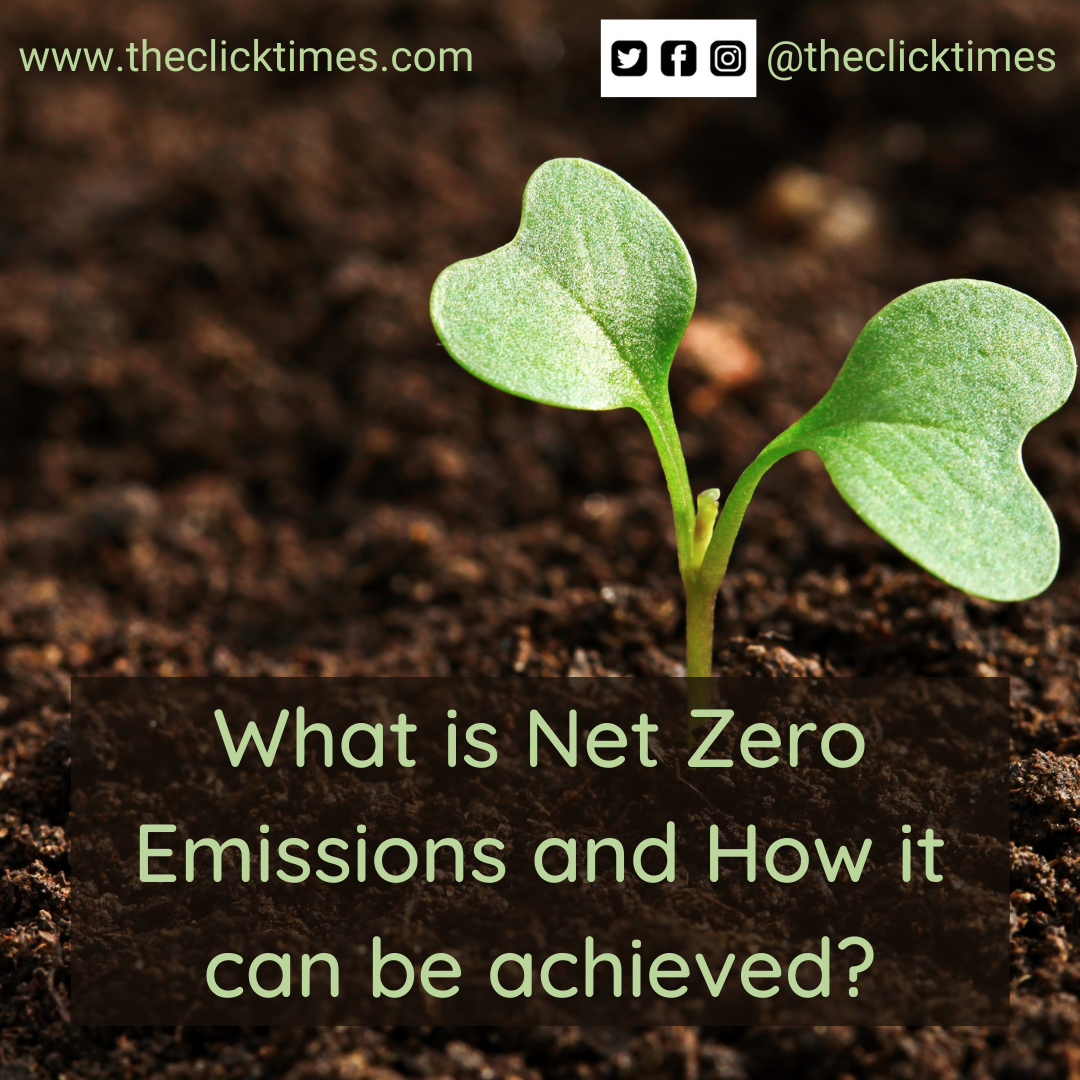Net zero Emissions Meaning:
The Click Times: Net Zero Emissions means to accomplish a balance between the amount of greenhouse gas emissions and the deletion of greenhouse gases from the atmosphere.If we want to achieve the Net-Zero Emissions goal,We remove the whole man-made greenhouse gases out from the atmosphere.
In April 2021, a Virtual meeting of 40 leaders from the world was conducted by the United States on Climate change. In that discussion, many countries like US,UK,EU countries promised that they are bound to execute the net-zero goal by the year 2050.
Why the concept of Net Zero:
Continued greenhouse gas emissions from industries, transportation systems, and livestock lead to global warming and changing weather patterns as greenhouse gases tend to trap heat and prevent it from escaping from the earth. Climate change will cause severe floods and droughts, leading to massive displacement of people and loss of life.
Many greenhouse gases such as carbon dioxide, methane etc. They occur naturally in the atmosphere. Therefore, the temperature has increased during the last million years. In the past, it took about 5,000 years for the earth to warm up to 5 degrees Celsius. But in the last century alone, that is, from 1900 to 2000, the global temperature rose by 0.7 degrees Celsius. And the global temperature is expected to increase by 2 to 6 degrees Celsius between 2000 and 2100, which is 20 times faster than the normal growth rate.
If the global temperature rises by just 2 degrees Celsius, it will have dangerous consequences. At COP21 (the 21st session of the United Nations Climate Change Conference) in December 2015, world leaders decided to limit global warming. at 1.5 degrees Celsius.
To achieve this goal, several countries committed at the April 2021 virtual climate summit to become carbon neutral countries by 2050 or to become net emitting countries.
How Net-zero Emissions can be achieved:
Reduce greenhouse gas emissions by taking various measures, e.g the development of renewable energy sources instead of burning fossil fuels, the replacement of fuel-powered vehicles with electric vehicles, the development of efficient technologies, etc. The energy, transport and manufacturing sectors must adopt net-zero targets.
Create carbon sinks to store carbon dioxide by removing it from the atmosphere. Plants and the sea are natural carbon sinks that absorb CO2 from the air. Therefore, creating additional forest and tree cover can remove a certain amount of carbon dioxide from the atmosphere.
Through the use of carbon capture technologies. Carbon capture technologies can help remove carbon dioxide from the atmosphere and store it deep underground where it cannot be released back into the atmosphere.
Steps taken worldwide:
Several countries, including the UK, US, New Zealand and Brazil, have committed to achieving net-zero emissions by 2050.
Sweden has maintained the goal of net-zero emissions by 2045.
India has maintained the goal of net-zero emissions by 2070.
Bhutan and Suriname are CO2 negative countries. This means they absorb more carbon than they emit.
Criticism:
Many countries, particularly developed ones, have missed the targets promised at previous climate summits. As a result, many believe the promise of net zero could also be delayed.
Historically, the US and EU countries caused most CO2 emissions through rapid industrialization. Therefore, they need to reach the net-zero emissions target much sooner rather than postponing it to 2050. Also, developing countries like India have not yet reached the maximum emissions and therefore cannot afford to declare the target year. It is therefore unfair to expect all countries to reach the target by mid-century.
Technologies for CO2 capture are still in the development phase. Therefore, relying on these technologies to achieve net zero emissions goals is unrealistic. And this concept can also undermine the importance of reducing carbon emissions through the transition to a greener economy.
Conclusion:
Net zero’s goal is very challenging and urgently needed. This should not be delayed like previous climate targets. And all countries must have short-term goals, without which achieving the larger goal will be almost impossible. Developed countries, which historically have been responsible for most of the CO2 emissions, should help developing countries in the transition to zero-carbon countries by helping them financially and also through technology transfer.
Follow us on the twitter.
Tags: net zero emissions target, net zero emissions meaning, net zero emissions

